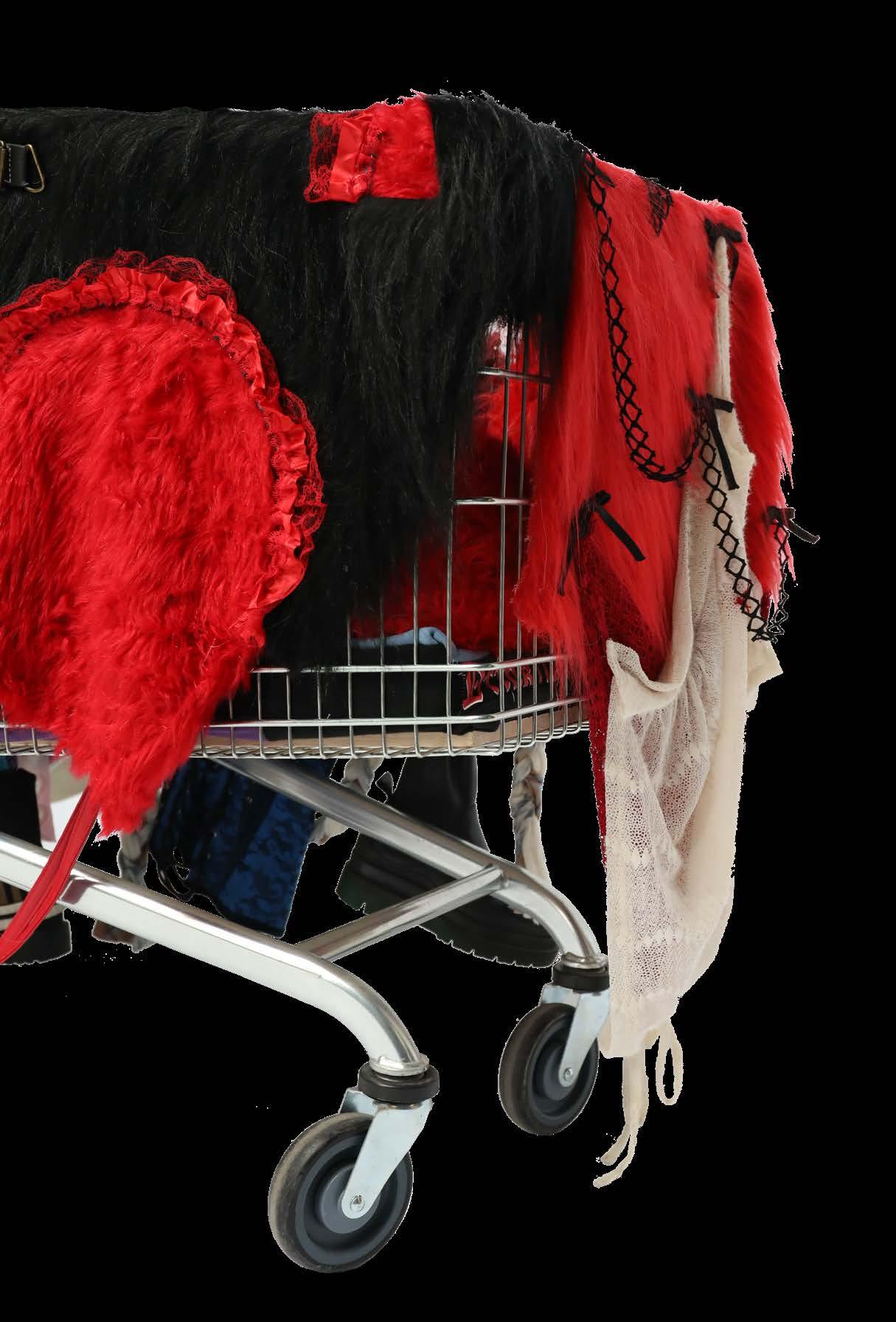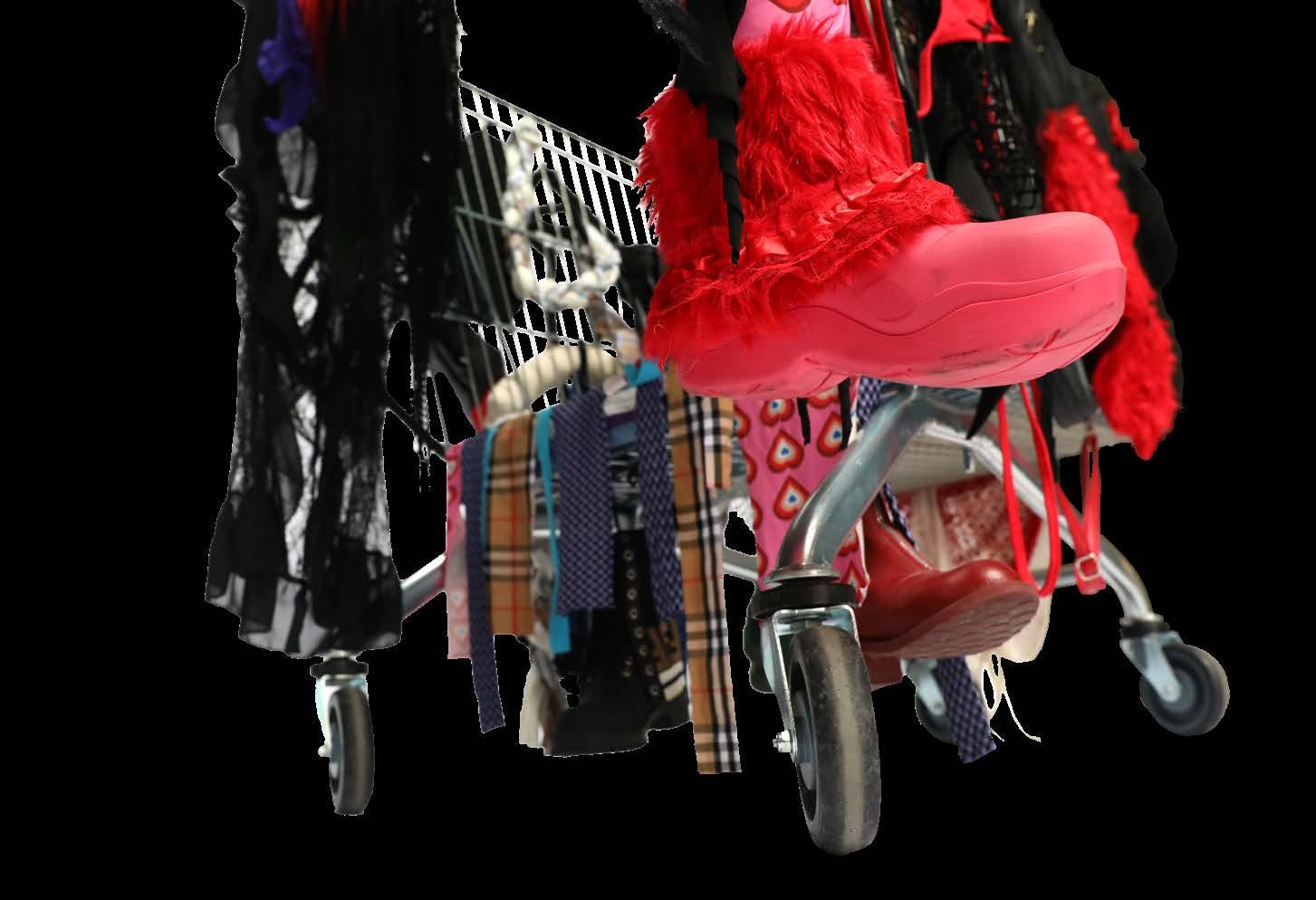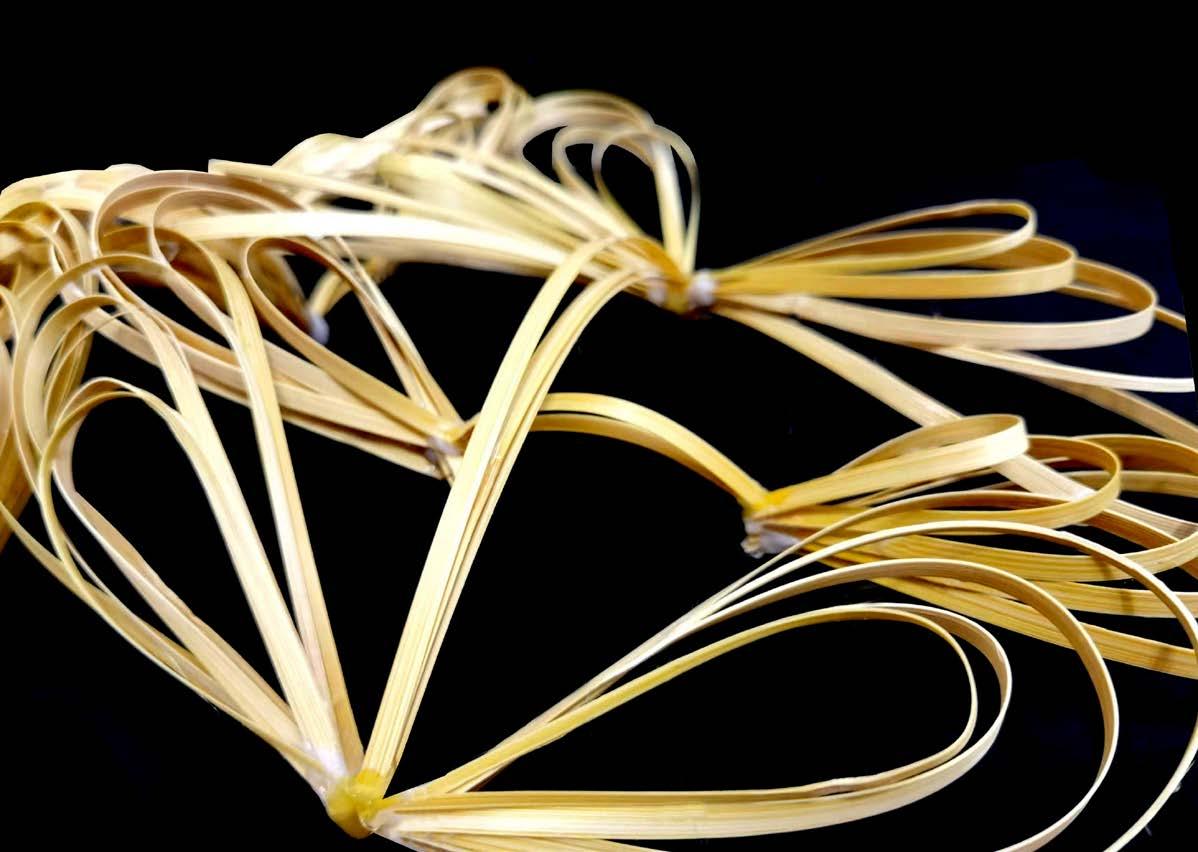Project 1
Memory Space
Different ways of remembering in patients with aphantasia
Date: April 2023
Location: Shanghai, China
Personal work
For many, visual imagery is intrinsic to how they think, remember past events and plan for the future – a process they engage in and experience without actively trying to. But it turns out that this isn’t true for everyone. Some people, when asked to form an image, will report they cannot “see” anything. This recently-identified variation of human experience was named in 2015 as aphantasia.
Although patients with aphantasia were unable to create mental images, they were still able to remember the contents of the space with normal people. Therefore, through this project, I will use five unique memory ways to combine my childhood memories with five senses to present them.

Concept
Aphantasia is the inability to actively create a mental picture. While most people can conjure up a scene or a face in their mind, people with anechoichia cannot picture a scene, person, or object, even if the object is very familiar. If you were to ask a person with anaesthesia to imagine something, they might be able to describe the object, explain the concept, but they would not be able to experience any form of mental image that goes along with that knowledge.

The phenomenon got its name when cognitive neuroscientist Adam Zeman coined the term "Aphantasia" in 2015. The name comes from the ancient Greek word "a," meaning "without," and "phantasia," meaning "imagination."
a. Multi-Sensory Imagery (QMI) c. Night Dreams (SERS) b. Trauma Response (PCL-5)




Memory Mode
Data Analysis
Summary of self-reported cognition questionnaires for individuals with aphantasia (red, n = 267) and control group 1 participants with visual imagery (blue, n = 203). Violin plots of mediancentred scale scores with median (bold line), lower and upper quartiles (thin lines) and kernel density-smoothed frequency distribution (shaded area) coloured by group.
Childhood Memories

Patients with aphantasia V.S. Normal



Element: Trampoline
Color: Green
Element: Climbing net Color: Pink Mood: Happy
Element: Ocean ball
Color: Yellow
Mood: Safe
Element: Hole channel
Color: Black
Mood: Fear
Element: Slide Color: Blue Mood: Hesitation

Space 1: Tetris
Everything in space corresponds to a relative coordinate by which their position is determined.

Space 2: Action path
The path of action constitutes every piece of furnishings in the space.

Space 3: Consciousness coding
The corresponding information can be obtained by decoding the objects in the space.

Space 4: Musical melody
The furnishings in the space change according to the melody of the music.
When went to high school, began to learn painting.
Mood: Anxiety
After went to primary school, joined the choir and brass band.

Space 5: Text messages
All objects correspond to a series of adjectives, a series of adjectives that denote the object.
Spatial Impression

When was in kindergarten, my parents often took me out to play. When was in primary school, my father became a policeman.
Both of my parents were in the military, so grew up in military family compound, and here is big park in the compound.
years old till now

The first space : It is made up of Tetris and ocean balls, which overflow from the cabinet door, symbolizing the memory pouring out over time, but the structure of the cabinet is also revealed.
In the second space : three nets are woven and suspended from the top down. From the top of the net, the balls fall in layers down the structure of the net.

The fifth space : It is composed of a trampoline, which is made of green pepper juice and gelatine slices frozen, and there are many labels on the trampoline.
The third space :
It consists of a number of pipes, and through the gaps between the rows of pipes, the rear scene can be seen. And through the continuous arrangement and connection of the pipeline, a multi-path device is formed.


The fourth space :
It is made up of slides, down which glass beads are rolled, and eventually, the beads fall onto the keys, striking different movements.


https://youtu.be/sDkJiJmYxJA?si=TR6J3uXoFRDKdnaB
This is a video about my childhood memories. Through the production and presentation of the model, the unique memory mode of patients with aphantasia is presented.


1.Tactile Space
Main color: Yellow
Sensory information: Touch
Element: Ocean ball





The first space is about the sense of touch, and people can climb the ocean ball in the space to get to the second floor.
The whole space is dominated by yellow, creating a sense of security and comfort that my childhood brought me.
The ocean ball devices in the space are combined in a manner similar to Tetris, with each device having its corresponding coordinates. Patients with aphantasia can reorganize their memory space by remembering the coordinates of objects in space.





Main color: Pink
Sensory information: Smell
Element: Climbing net 2.Olfactory Space


The second space is about smell, and people can feel the atmosphere of the whole space on the installation net and the perfume bag at the bottom of the space.
The whole space is dominated by pink, creating a relaxed and pleasant atmosphere that my parents often took me out to play when I was 5 to 8 years old.







Multiple layers of nets are suspended in the space, and people can walk down the layers of the net from the top. Patients with aphantasia can recreate their memory space through recall or repetitive action pathways.
 Explosion
Diagram
Explosion
Diagram




The third space is about vision, and the stainless steel blocks and pipes in the space give a sense of puzzle.
The whole space is mainly black, which is a sense of fear when I was waiting for my father to get off work at the police station when I was in primary school.
The metal blocks in the space can be rotated to form different two-dimensional codes, and the specific information of different devices can be obtained by scanning the two-dimensional codes formed on different squares. People can also shuttle between the pipes to find the exit of the space. Patients with aphantasia can encode everything they see and decode it at specific times, reshaping the space.


3.Visual Space
Main color: Black
Sensory information: Visual
Element: Pipeline

 Explosion Diagram
Rendergraph
Pipeline Device
Explosion Diagram
Rendergraph
Pipeline Device
4.Auditory Space
Main color: Blue
Sensory information: Hearing
Element: Slide


The fourth space is about hearing, which is dominated by blue.

Music Device

The space has multiple slides that shuttle from the roof to the interior and eventually to the outdoor deck.


People with aphantasia can use the rhythm of music to combine it with spatial elements, thus achieving the purpose of restoring space.



The fifth space is about taste, the whole space is mainly green.
People can see a series of adjectives in this space, and patients with aphantasia can state their memory space to others through a series of descriptive adjectives.
5.Taste Space
Main color: Green

Sensory information: Taste
Element: Trampoline

 Rendergraph
Rendergraph
Project 3
The Butterfly Lovers
A new type of opera combining Chinese opera with cyberpunk aesthetics.
Date: February 2023
Location: Shanghai, China
Personal work

Liang Shanbo and Zhu Yingtai (The Butterfly Lovers) is one of The four great love stories of ancient Chinese folk, and The Butterfly Lovers. It is also a traditional Shaoxing opera. When I was young, followed my grandfather to see the Butterfly Lovers in the ancestral hall in the village. But with the development of the Internet, traditional Chinese opera has gradually disappeared from people's lives.
Therefore, hope to combine traditional Chinese opera and Internet technology to create a new type of opera, attracting more people to understand and fall in love with opera.
Chapter 2:
Terrain Story

study, Zhu Yingtai dressed as a man to deceive her father.
Layer 5: Terrain & Relief
Layer 4: Road planning
Layer 3: Mountainous area
Layer 2: Housing area
Layer 1: Topographic map
This is an old two-story building that has been abandoned for a long time, and the atrium on the second floor is badly damaged.
This is a garden at the gate of the village, in which the notice board briefly introduces some information about the village.
The building consists of a main building and two small rooms, with a spacious courtyard in the middle, and the house structure is relatively complete.
Shu's ancestral hall was built in the late Ming and early Qing Dynasties, more than 400 years ago. The layout of the ancestral hall is complete, the building is tall and spacious, and the materials are exquisite. The building consists of a main building and two small rooms, with a spacious courtyard in the middle, and the house structure is relatively complete.
Excursions

Synopsis


On his way to the academy to study, Liang Shanbo met Zhu Yingtai, a woman dressed as a man, on the grass bridge and became sworn brothers. After learning that Zhu is a woman, Liang goes to Zhu's house to propose marriage, only to be told that Zhu has forced the Ma family. Liang failed in his proposal and fell ill after returning home. Have his family bury him on North Horse Country Road. Zhu's bridal sedan passed in front of Liang's grave, and Zhu crashed into a willow tree and died. In the end, the two became butterflies.
Knitting Skill

The ribbon uses three braids, tabby, soumak and interlocking, to weave silk and fiber together.

1. 2. 3. 4.
The reason for the decline of opera audience
There are five main reasons for the gradual elimination of opera from the market.

1. 2. 3. 4.
By bending and knotting techniques, the hoses strung with optical fiber wires are formed into different shapes.




Ways to learn about opera
With the development of the Internet, there are more and more ways for people to learn about opera.






Conflicts in the story of Butterfly Lovers



Shu's Ancestral Hall
Before Zhu Yingtai returned home, let Liang Shanbo come to Zhu's home to marry her. For the society at that time, it was not allowed for a woman to fight for her love. At that time, Zhu Yingtai worked hard for his love with an idea that broke through the social concept at that time.
Ancient Building Neighbourhood Bazaar
During this period, Zhu Yingtai disguised herself as a man and tricked her father into studying. For the society that only allowed men to study at that time, Zhu Yingtai broke this bad habit and created the first conflict in the whole Butterfly Lovers story.

Here is the fourth conflict in the story, Zhu Yingtai's father offers her a marriage, but Zhu Yingtai does not want to accept the marriage, and has already made a private life with Liang Shanbo. This behavior greatly impacted the social system of arranged marriage at that time.
Abandoned Building Village Entrance
The second conflict in the story occurred during this period, when Zhu Yingtai dressed up as a man and became sworn brothers to Liang Shanbo. Zhu Yingtai used her fake identity to study with Liang Shanbo for three years, and fooled Liang Shanbo.

Zhu Yingtai dares to boldly pursue her own happiness, which is the last conflict in the story. On the way to marry Ma, Zhu Yingtai passes Liang Shanbo's cemetery, and then she bumps into Liang Shanbo's grave and dies, turning into a butterfly together with Liang Shanbo.
























